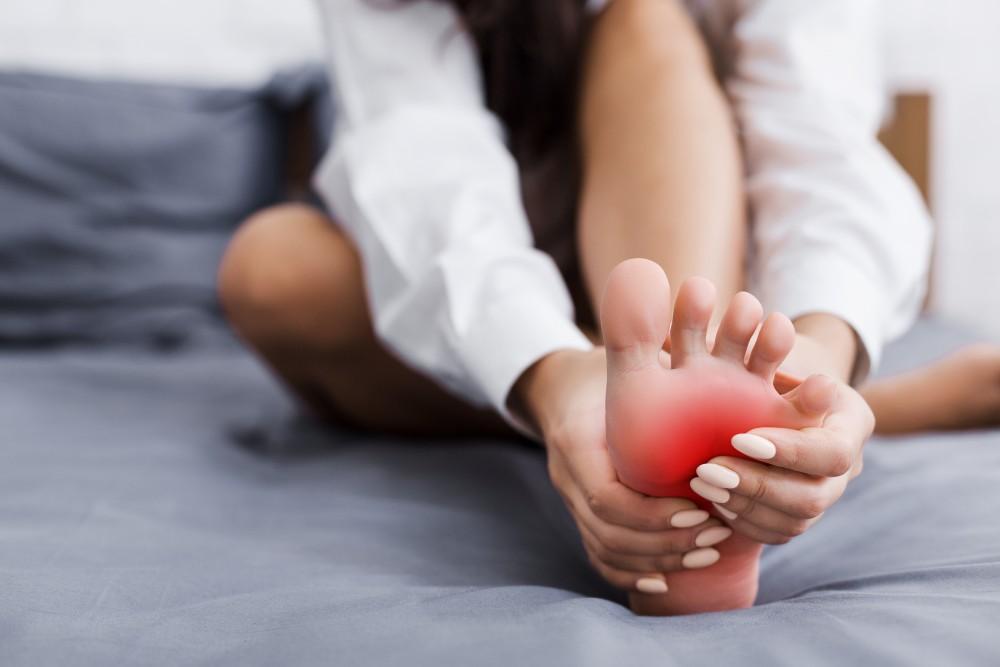
5 Signs Your Foot Injury Won’t Heal Without Professional Help

It’s easy for a foot injury to seriously cramp your style — and mobility. Whether it’s a sprain, fracture, a condition like an ingrown toenail, or something else, your normal activities can be curtailed suddenly.
How can you tell if taking a wait-and-see approach is the wisest decision, or if you need to see your podiatrist for professional treatment?
Since we’re as committed to educating patients as we are to treating them, our Premier Foot & Ankle team put together some helpful hints about when you can take a more relaxed approach with a foot injury and when the situation calls for more urgent action.
Foot injuries: When are they considered serious?
You’re in pain because of a foot injury, and you’re not moving around so well either.
We know it can be hard to distinguish between a foot injury that just needs time and rest to resolve itself and one that requires prompt attention from your Premier Foot & Ankle podiatrist.
After all, banging your foot on a piece of furniture could mean a nasty bruise or a fracture, a sports mishap might constitute a mild sprain or something more serious, and a condition like a bunion may cause minor discomfort or major pain. In other words, it’s important to consider where on a range of injury severity yours falls.
Here are five indications that your foot injury needs more than at-home TLC.
1. Realistically assess your level of pain and swelling
You may have a high pain tolerance or subscribe to the no pain, no gain philosophy (let go of that, seriously!), but if your foot injury is causing severe or quickly escalating pain and swelling, it’s best to make an appointment with our team so you can get treated, sooner rather than later.
2. Seek care if you notice any signs of infection
Signs of infection on a foot wound include developing a fever, pus discharge, warm skin, and skin color changes. If there are any signs of infection, it’s essential to get care. You could be at risk for sepsis, a life-threatening condition when your immune system goes into overdrive and actually damages your tissues and organs.
3. If you live with diabetes, always seek care for a foot injury
The risk for serious complications from foot injuries exponentially increases if you have diabetes. Diabetes hampers blood circulation and nerve function, meaning a foot injury can easily become infected and cause serious harm quickly, including sepsis.
Injuries also heal more slowly when you have diabetes, so seeing your provider immediately can ensure you’re not at risk for complications.
We provide critical diabetic foot care and talk to you about the importance of cleaning and checking your feet daily for any injuries — no matter how small or insignificant they seem. Neuropathy (nerve damage) causes numbness, so you might not feel an injury.
4. Seek care if your injury doesn’t improve in a certain amount of time
If the swelling caused by your injury doesn’t lessen within 2-5 days, it’s time to call us. The same goes for pain that doesn’t abate in several weeks.
5. See us if a condition you already have gets a lot worse
It’s time to schedule an appointment if you have a condition that suddenly worsens, like:
- An ingrown toenail that gets worse or seems infected
- A bunion that causes debilitating pain
- Plantar fasciitis discomfort that disrupts your normal activities
- Flat foot pain that increasingly interferes with your mobility
- Toenail fungus that spreads or intensifies
These are just a few examples, but any condition that becomes harder to live with should be checked out.
Once you’re assessed at Premier Foot & Ankle, your podiatrist creates a customized treatment plan for you so you can feel — and move — better ASAP.
Advanced treatment for a wide range of foot injuries
We’re proud to offer innovative treatments for your foot injury. Depending on exactly what type of injury it is, your podiatrist may prescribe:
- Physical therapy
- Pain medication, either over-the-counter or prescription
- A medical device, like a splint or orthotic
- Steroid injections
- PodiaTherm™ radiofrequency treatment, which treats plantar fasciitis, neuromas, and more
- Platelet-rich plasma therapy that hastens tissue healing
- Lapiplasty (3-D bunion correction)
- Multiwave Locked System (MLS) laser therapy for inflammation, bunions, and tendonitis
- Extracorporeal pulse activation treatment (EPATR) for many types of tendon and muscle pain
- Hyperion Hyper Blue 1530® advanced treatment for toenail fungus
- Foot surgery, when necessary
The breadth of treatments we offer for a wide range of foot injuries is sure to leave you pain-free and active, and that’s the goal!
Call one of our five convenient Texas Premier Foot & Ankle locations today to schedule an appointment, or you can book online anytime.
You Might Also Enjoy...


Back-to-School Sports and Achilles Injuries: Prevention Tips That Matter

Is Your Foot Pain Coming Back? Why EPAT Therapy Might Be Your Answer

How Does Vascular Testing for PAD Work?

How Foot Symptoms Are Indicators of Whole-Body Health


